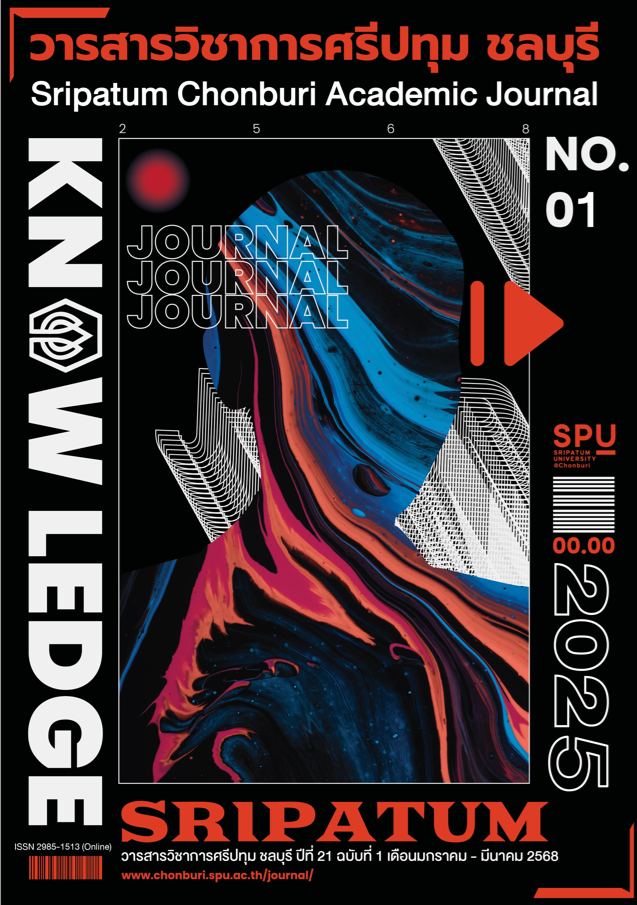THE ROLE OF TECHNICAL COMMUNICATION BY THAI STAFF IN INFORMATION TECHNOLOGY EQUIPMENT RETAILERS IN BANGKOK ON CUSTOMER SATISFACTION AND BRAND TRUST: A CORRELATION ANALYSIS
Keywords:
Technical Communication, Customer Satisfaction, Brand TrustAbstract
This study examined the role of technical communication by Thai staff in information technology equipment retailers in Bangkok in relation to customer satisfaction and brand trust. Data were collected through an online survey of 300 respondents who were customers of technology service centers in Bangkok, selected via a convenience sampling method. The study analyzed the relationships among customers’ need for staff proficiency in English technical vocabulary, satisfaction with the staff’s use of technical terminology, and brand trust. Descriptive statistics, including mean and standard deviation, alongside Pearson’s correlation analysis, were employed. The results indicated a significant positive influence of customers’ demand for staff’s technical English skills on their satisfaction with the staff’s technical communication. In turn, customer satisfaction was found to positively impact staff responsiveness, thereby enhancing brand trust. Furthermore, an indirect positive effect of customer demand for technical communication on brand trust was identified, mediated by customer satisfaction. The research underscores the critical role of effective technical communication in enhancing customer experience, aligning with customer expectations for clear technical explanations, increasing satisfaction, and fostering trust in the brand’s expertise and reliability.
References
Anderson, Paul V. (1998). Technical communication: A reader-centered approach (Online). Available: https://archive.org/details/technicalcommuni0000ande_d7w9 [2023, February 7].
Byrne, D. (2007). The user-centered user manual. In K. St. Amant (Ed.), Linguistic and Cultural Issues in Knowledge Management (pp. 14-28). Hershey, PA: IGI Global.
Cuong, D. T. (2020). The impact of brand credibility and perceived value on customer satisfaction and purchase intention at fashion market. power, 12(3), pp. 691-700.
Dastoom, M., Naseem, M. A., Hussain, M., & Jaffar, S. (2019). Impact of technical communication skills on customer satisfaction: A case study of telecommunication industry of Pakistan. International Journal of Experiential Learning & Case Studies, 4(2), pp. 298-310.
Delgado-Ballester, E., & Munuera-Alemán, J. L. (2005). Does brand trust matter to brand equity?. Journal of Product & Brand Management, 14(3), pp. 187-196.
Faber, B., Petersen, T., & Staal, M. (1998). Understanding technical documentation: A cognitive approach. Improving @Instrctions for Usability.
Ha, H. Y., & Perks, H. (2005). Effects of consumer perceptions of brand experience on the web: Brand familiarity, satisfaction and brand trust. Journal of Consumer Behaviour, 4(6), pp. 438-452.
Horppu, M., Kuivalainen, O., Tarkiainen, A., & Ellonen, H. K. (2008). Online satisfaction, trust and loyalty, and the impact of the offline parent brand. Journal of Product & Brand Management, 17(6), pp. 403-413.
Jandová, E. (2016). Comprehensibility of specialized texts from the perspective of expert and semi-expert readers. Discourse and Interaction, 9(2), pp. 47-64.
Johnson-Sheehan, R. (2018). Technical communication strategies for today. New York: Pearson Education.
Markel, M., & Selber, S. A. (2018). Technical communication. Boston, MA: Macmillan Higher Education.
Official Statistics Registration Systems, Department of Provincial Administration, Ministry of Interior. (2023). Statistical report on population, December 2022 (Online). Available: https://stat.bora.dopa.go.th/stat/statnew/statTDD/views/showDistrictData.php?rcode=102&statType=1&year=66 [2023, March 15].
Piriyakul, M., Wongchuer, S., & Satiman, N. (2015). Factors affecting customer satisfaction of Samsung smartphone users in Thailand. In Proceedings of the 6th International Conference on Engineering, Project and Production Management (EPPM2015), (pp. 20-28). Gold Coast, Queensland: Griffith University.
Redish, J. C. (2007). Letting Go of the Words: Writing Web Content that Works. San Francisco, CA: Morgan Kaufmann.
Schober, P., Boer, C., & Schwarte, L. A. (2018). Correlation coefficients: Appropriate use and interpretation. Anesthesia & Analgesia, 126(5), pp. 1763-1768.
Singh, A. S., & Masuku, M. B. (2014). Sampling techniques & determination of sample size in applied statistics research: An overview. International Journal of Economics, Commerce and Management, 2(11), pp. 1-22.
Sun, R., & Kim, Y. (2022). The influence of customer value on satisfaction and repurchase intention: The mediation effect of customer satisfaction. International Journal of Tourism Sciences, 22(1), pp. 19-35.
Swaen, V., & Chumpitaz, R. (2008). Impact of corporate social responsibility on customer trust and satisfaction. Journal of Business Ethics, 82(2), pp. 263-273.
Turner, R. C., & Carlson, L. (2003). Indexes of item-objective congruence for multidimensional items. International Journal of Testing, 3(2), pp. 163-171.
Wanichthanarak, K. (2001). Statistics for research 1. Bangkok: Chulalongkorn University Press.
Warmbrod, J. R. (2014). Reporting and interpreting scores derived from Likert-type scales. Journal of Agricultural Education, 55(5), pp. 30-47.
Wong, L. Y. (2017). Communication skills and customer satisfaction – Consumer perceptions of technical consultations. Journal of Technical Writing and Communication, 47(1), pp. 115–135.
Downloads
Published
Issue
Section
License
Copyright (c) 2024 Sripatum University Chonburi Campus

This work is licensed under a Creative Commons Attribution-NonCommercial-NoDerivatives 4.0 International License.
บทความทุกบทความเป็นลิขสิทธิ์ของวารสารวิชาการศรีปทุม ชลบุรี



